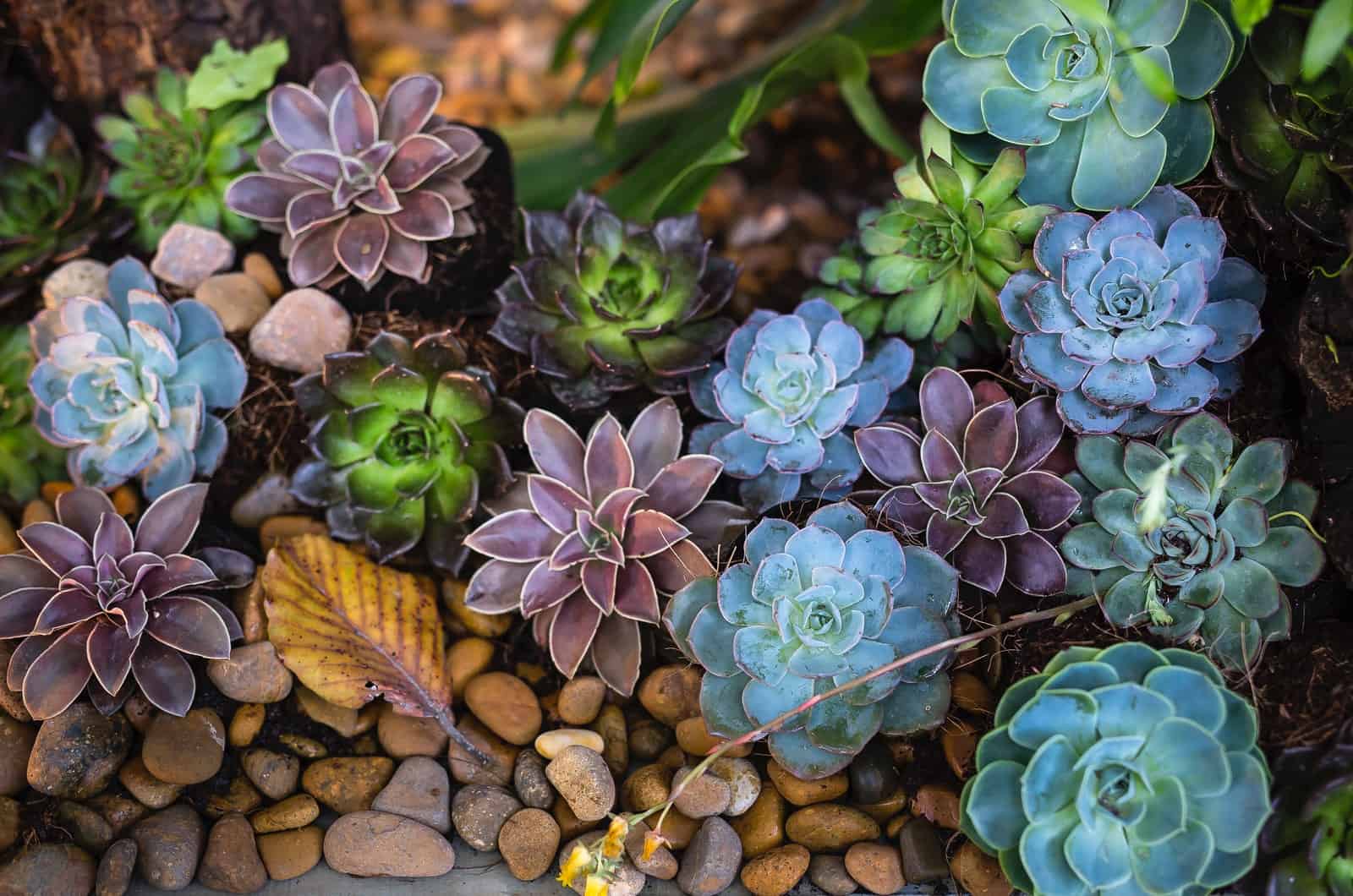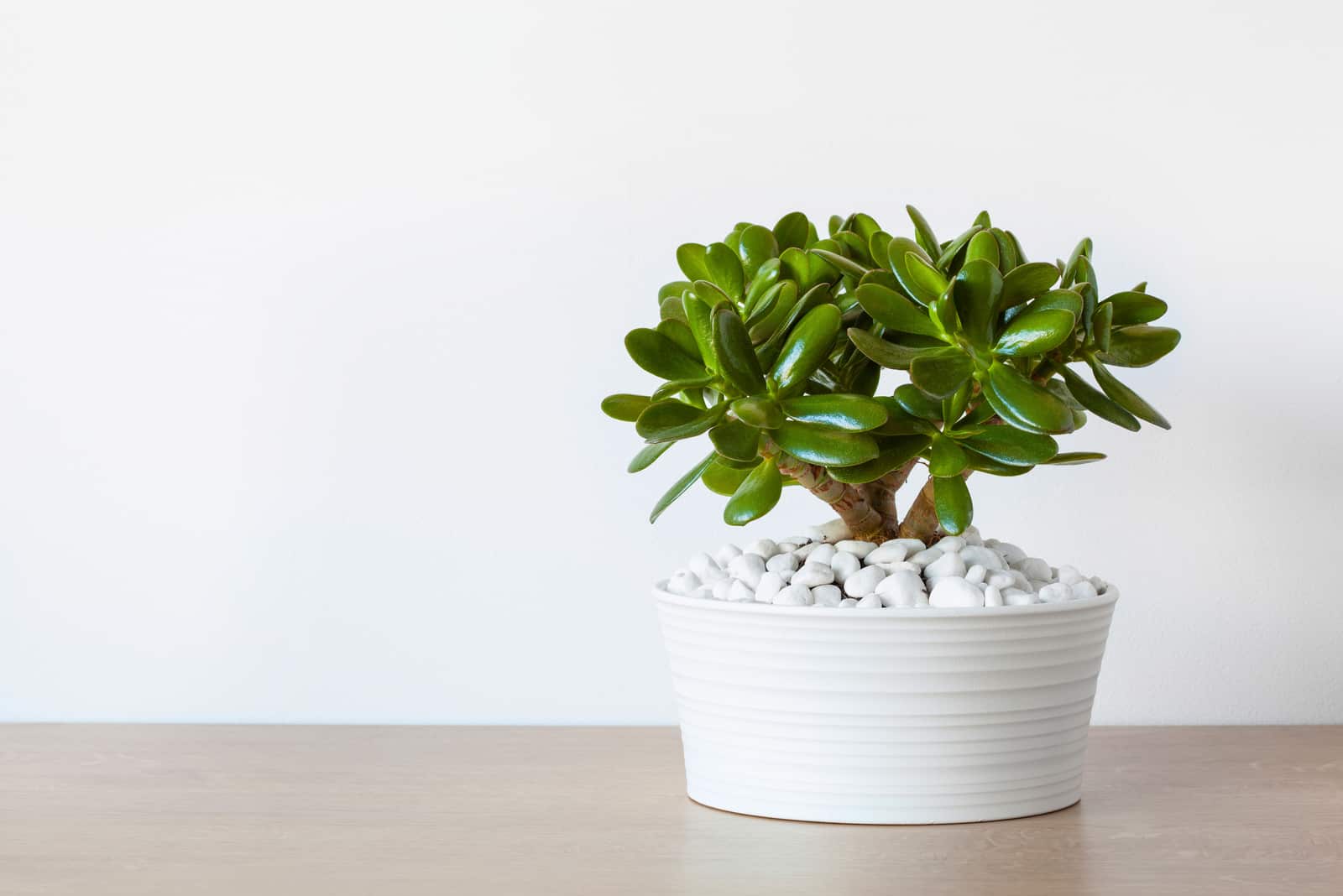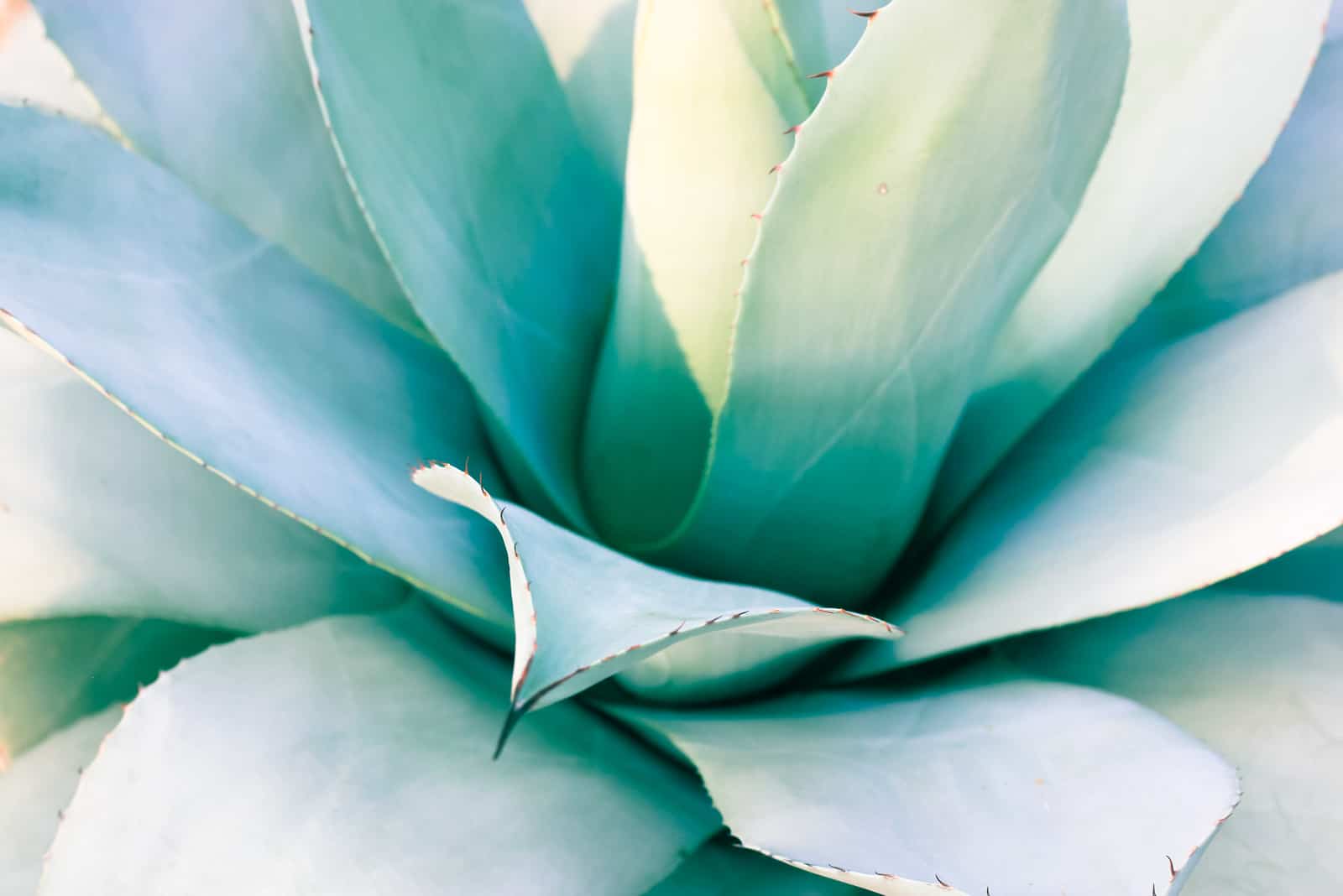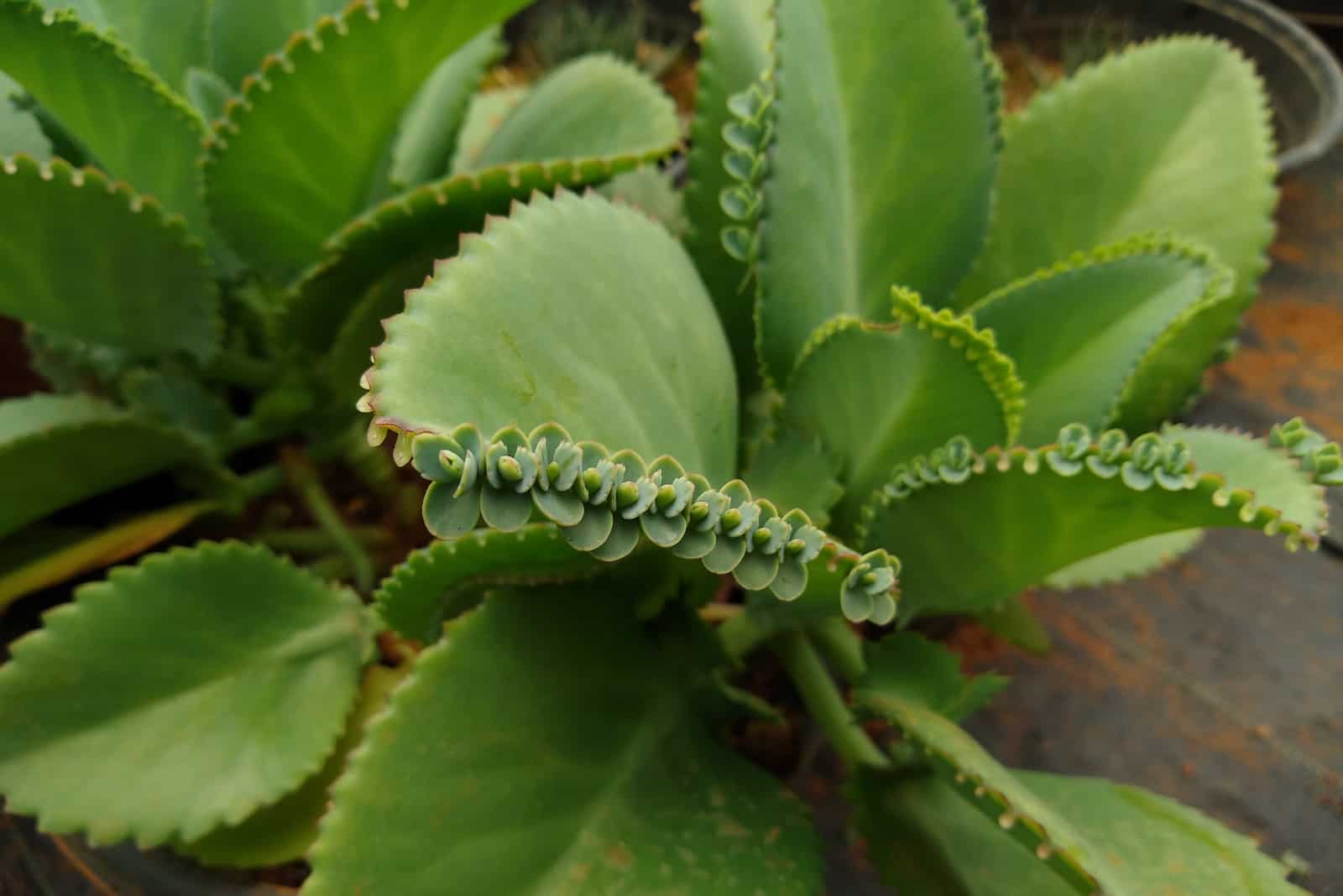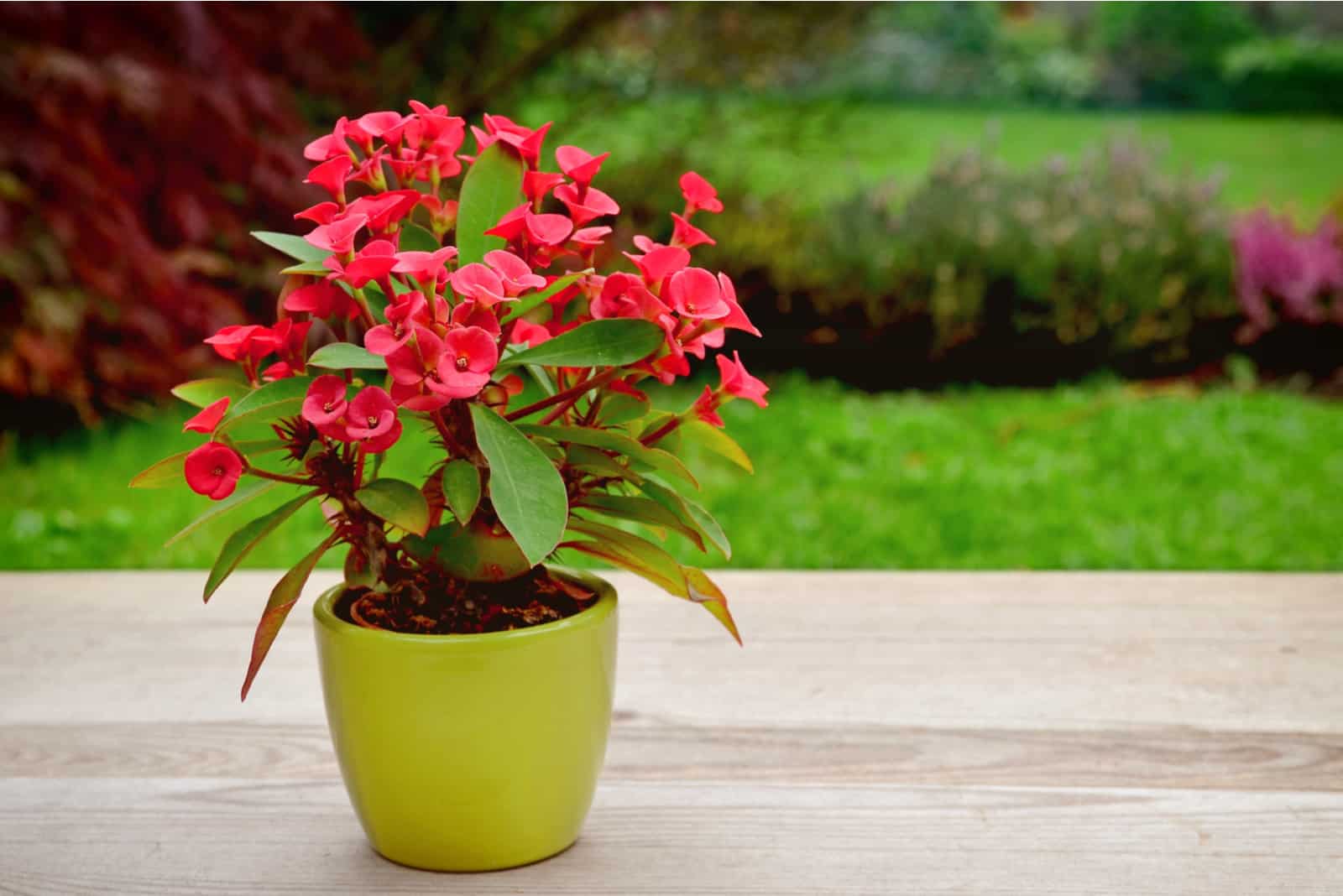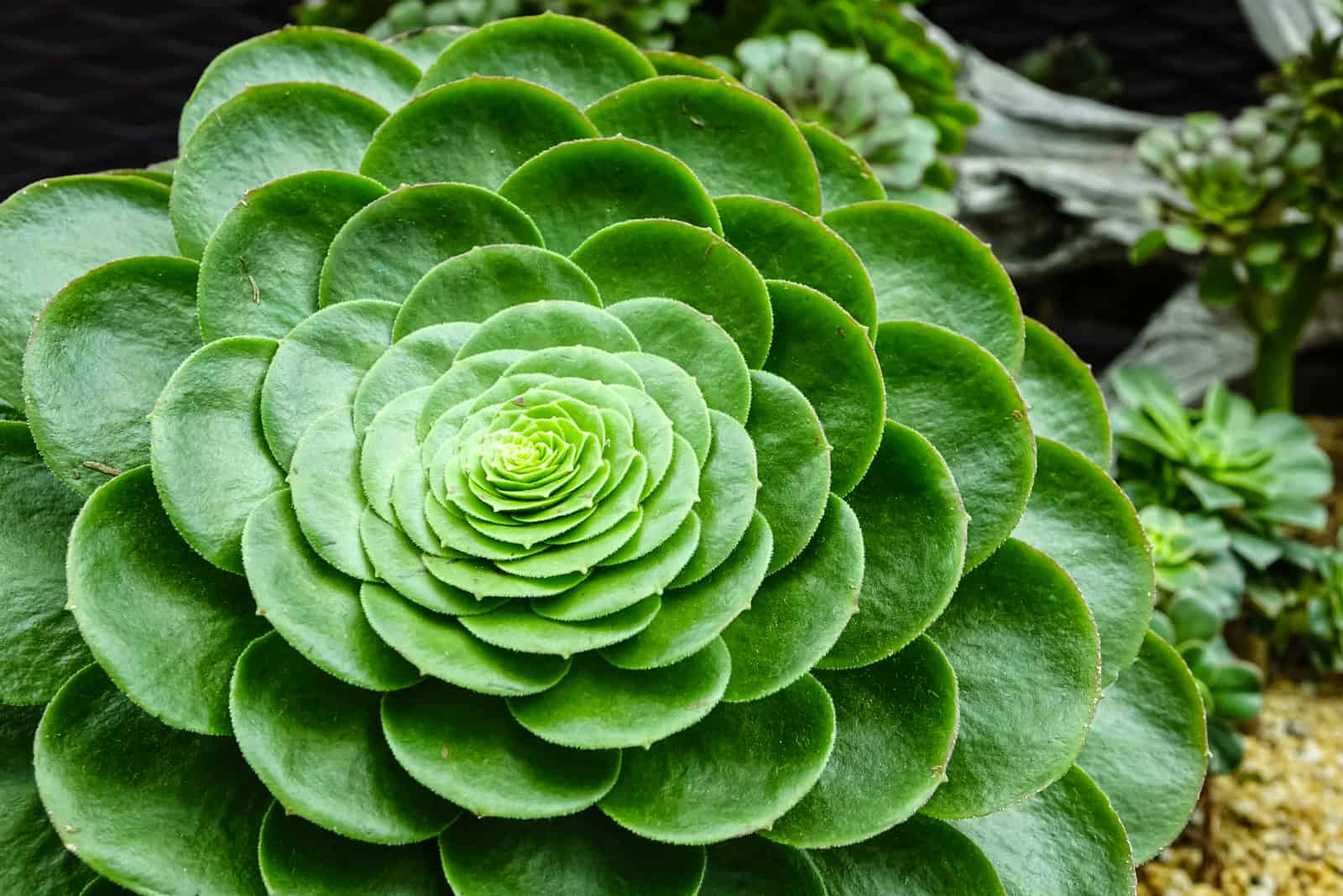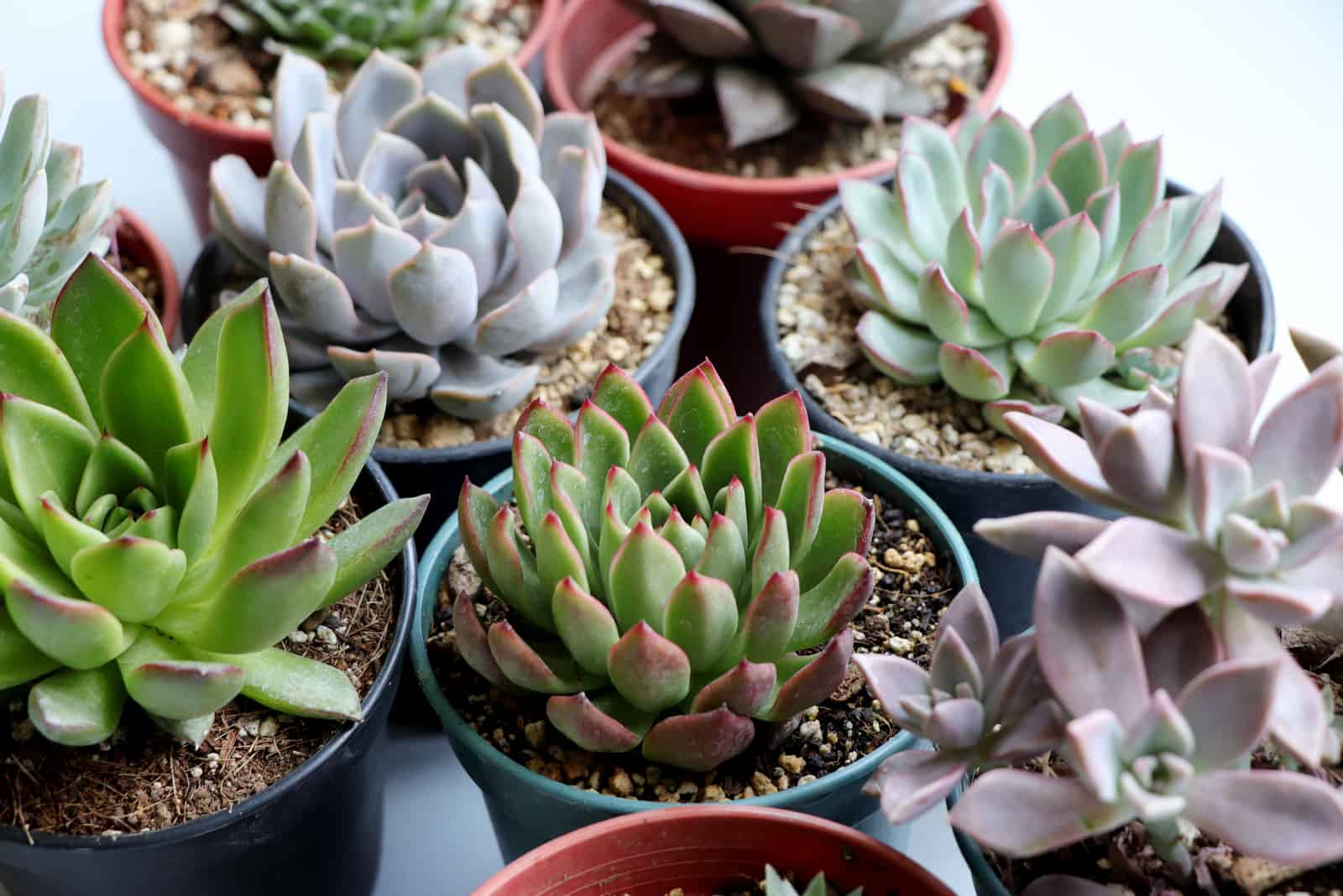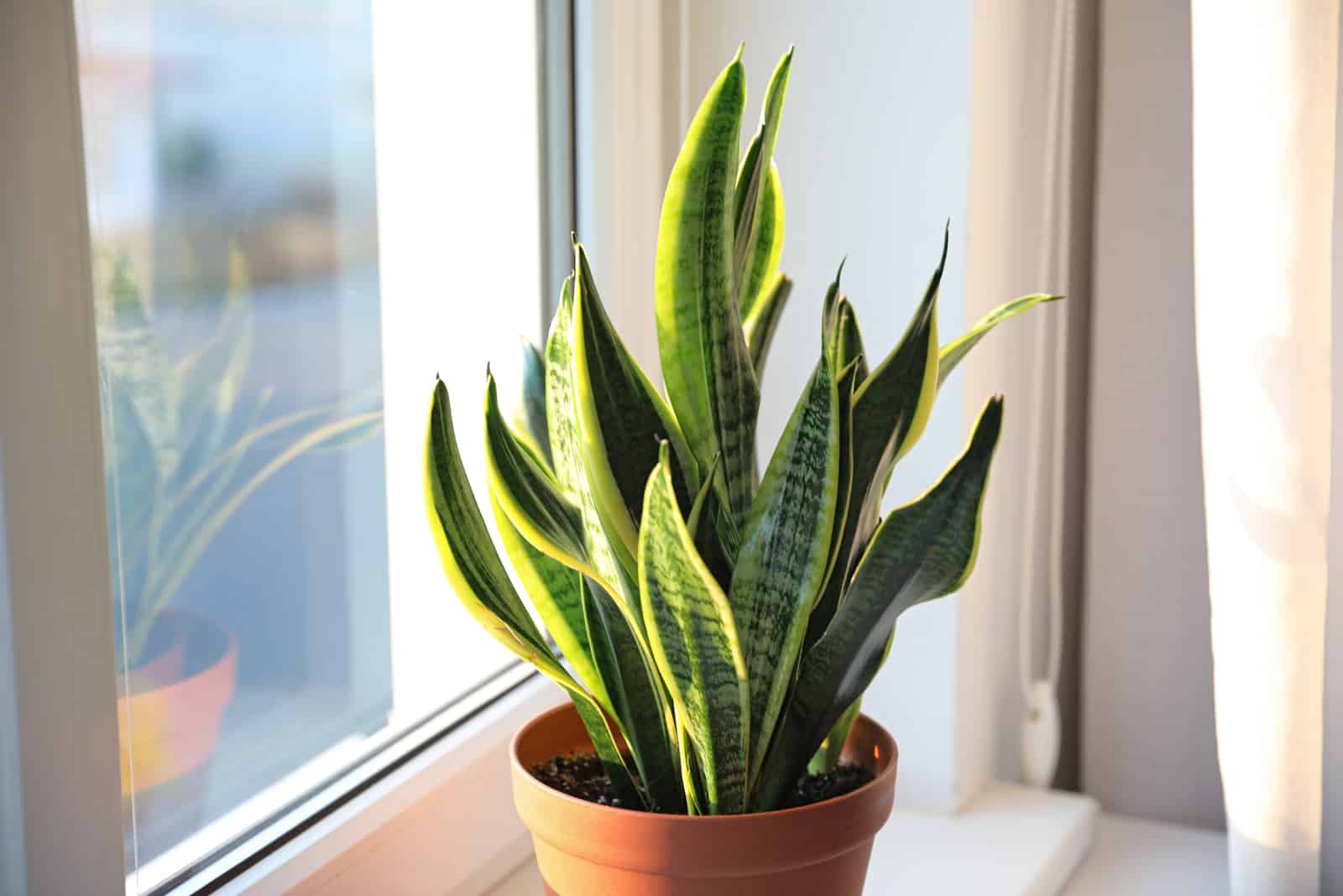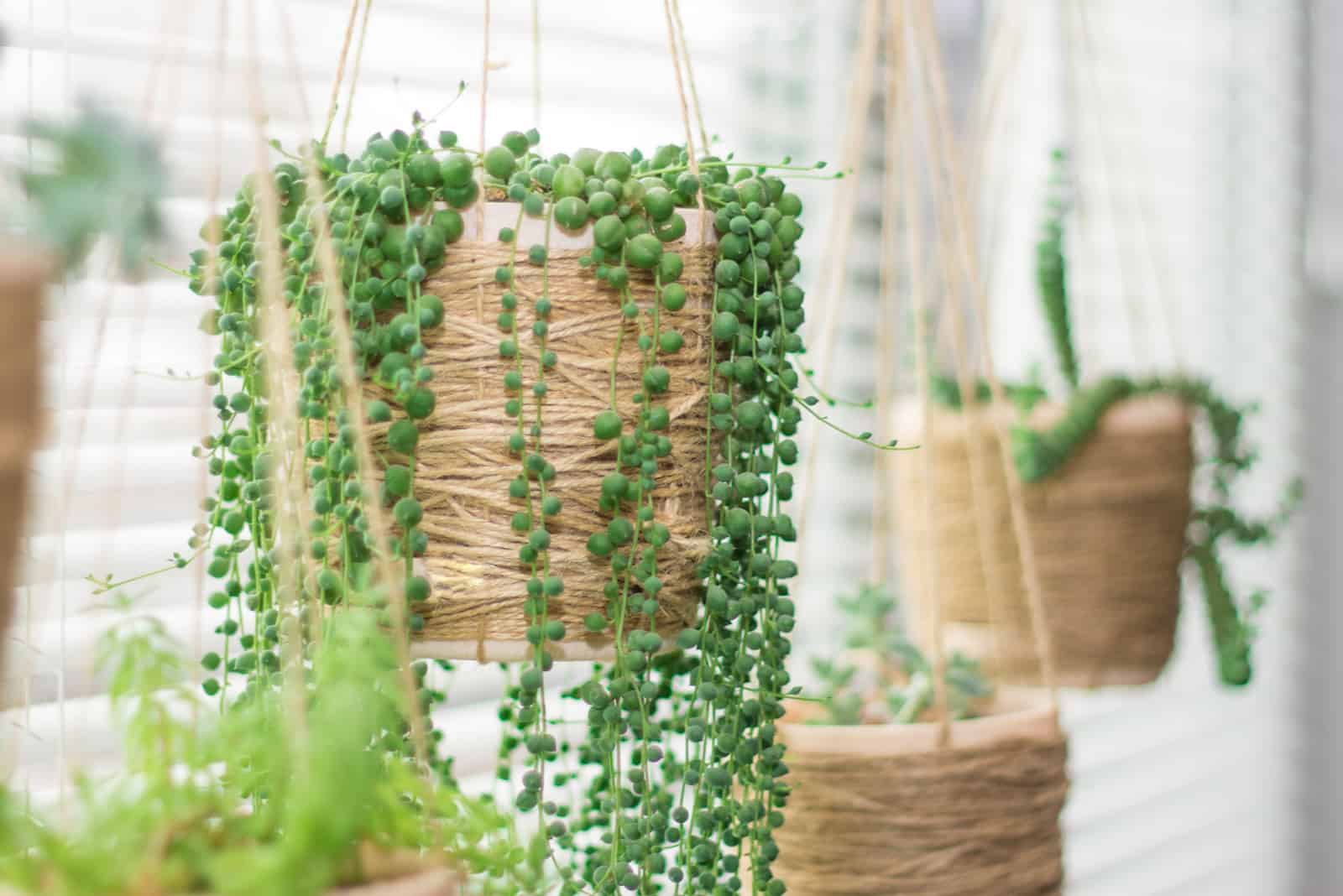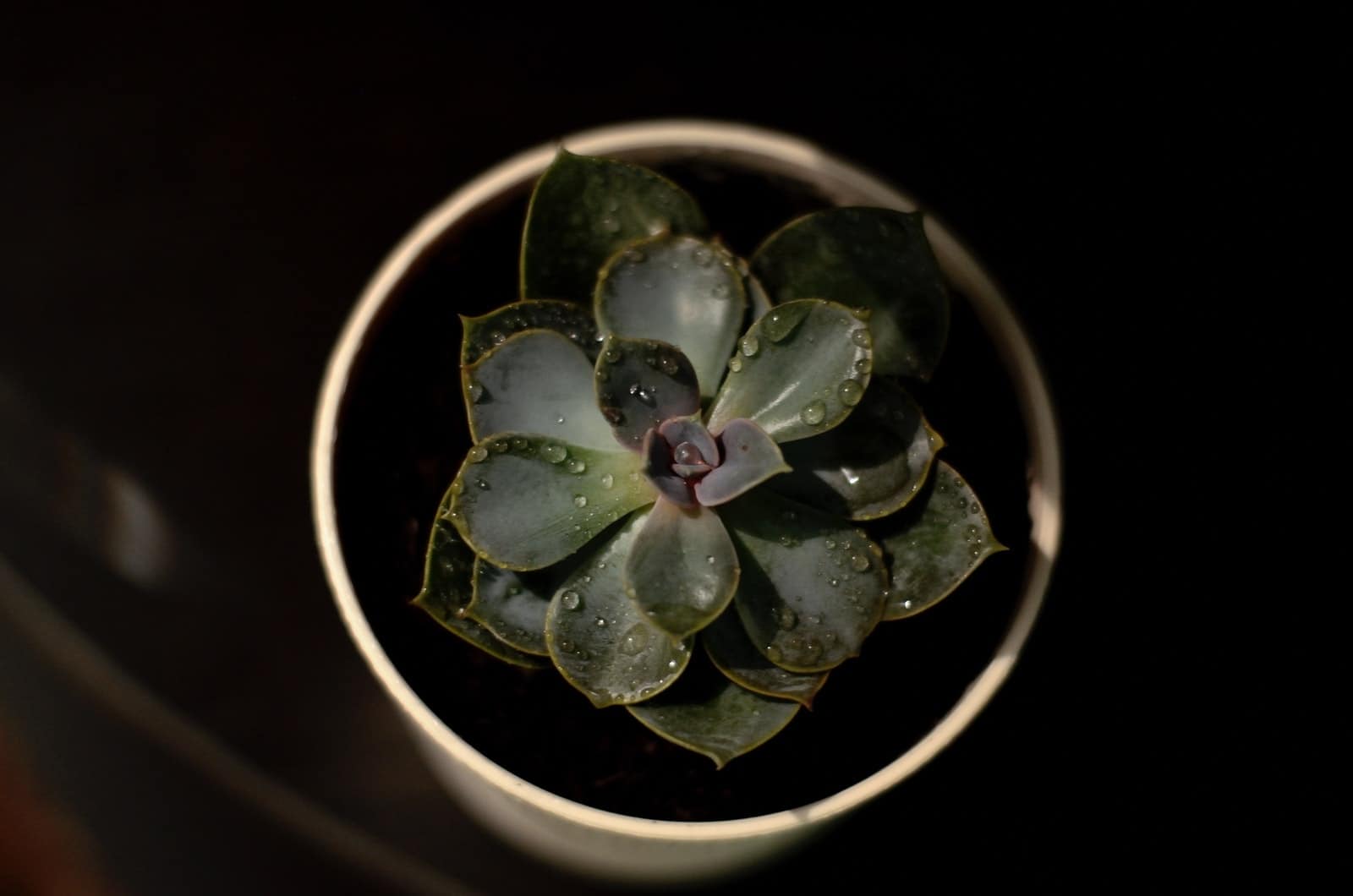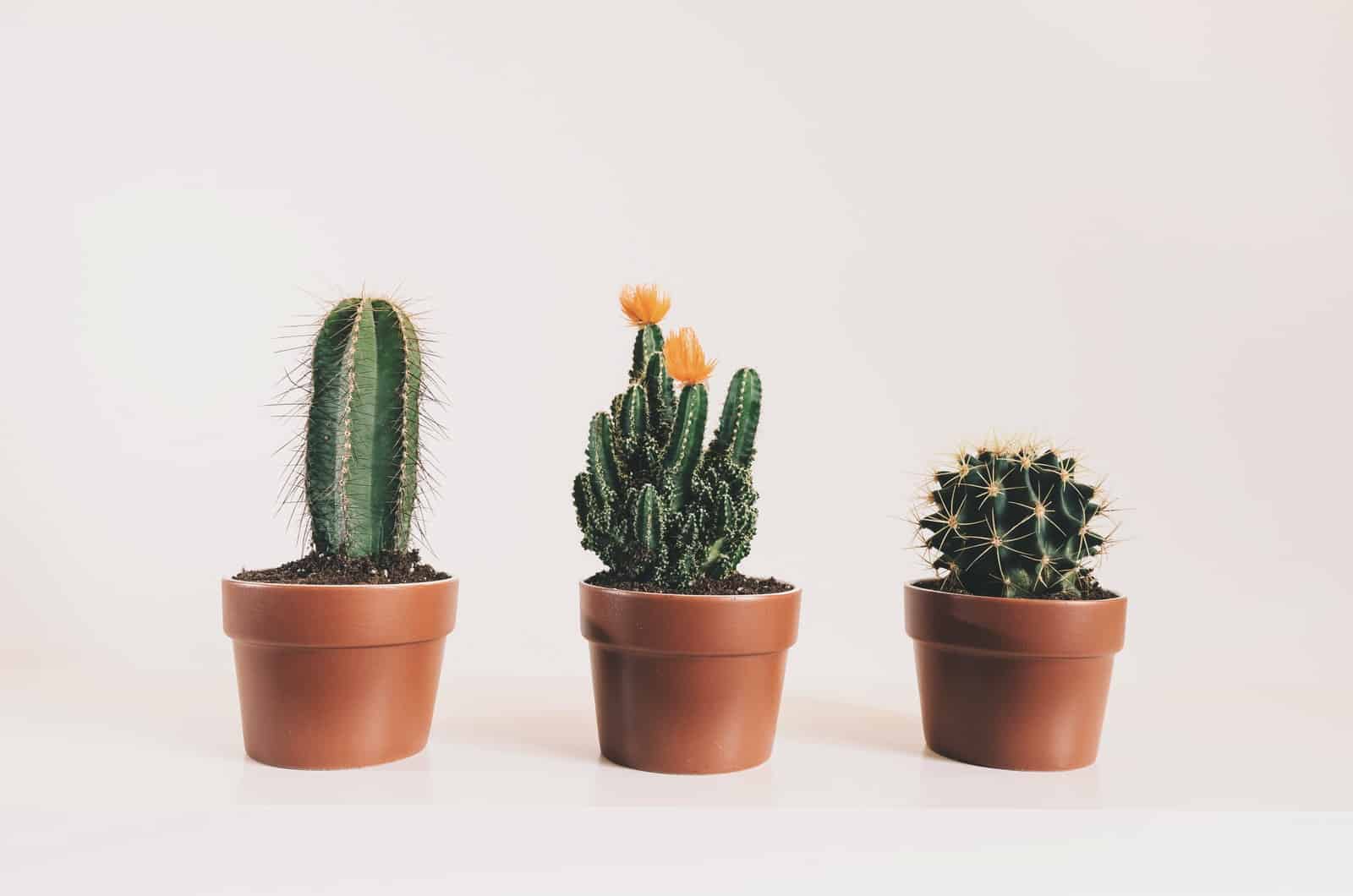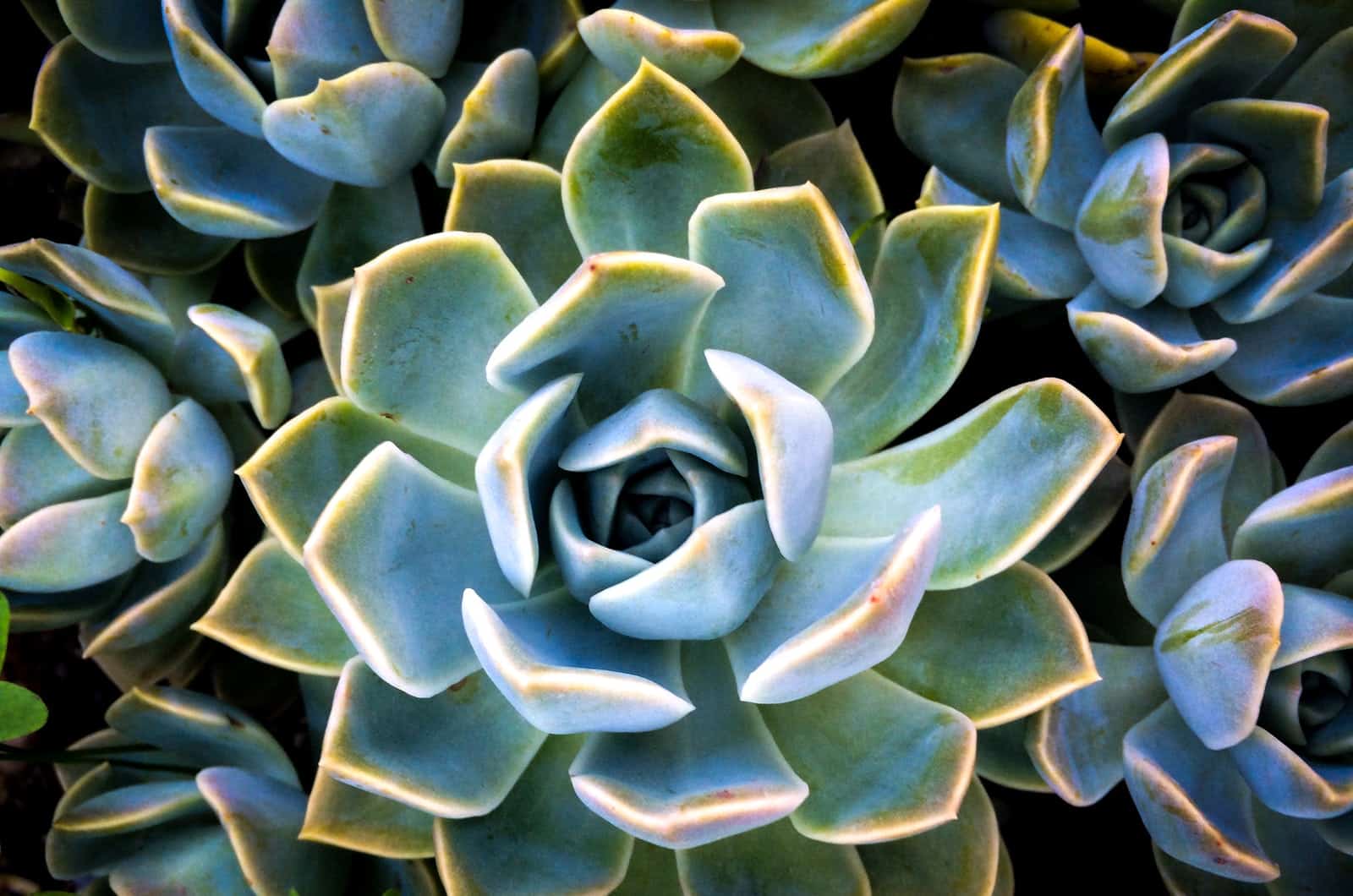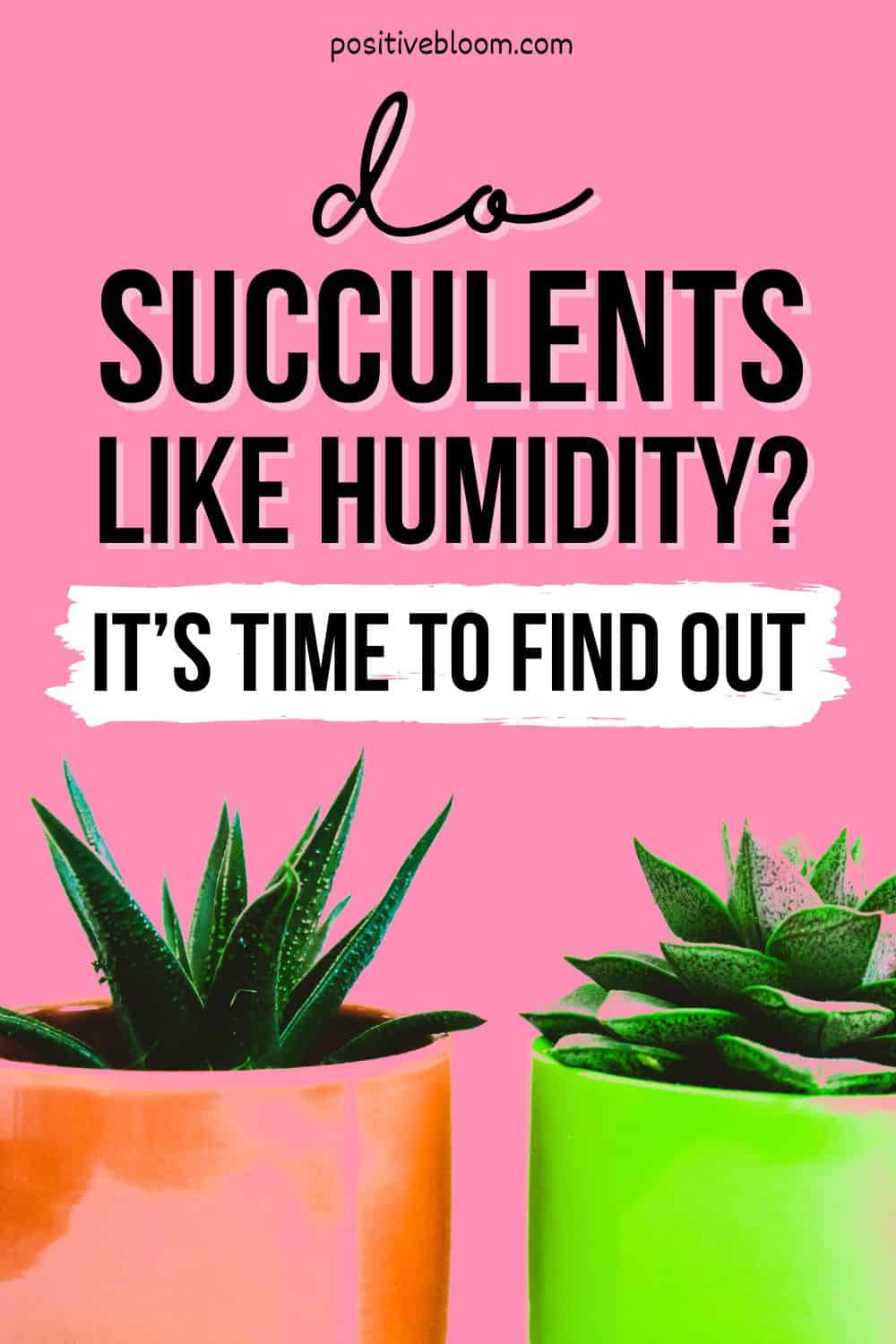Positive Bloom is an Amazon Associate and we earn from qualifying purchases through these links at no extra cost to you.
Succulents are our favorite indoor plants as they are super easy to maintain. You can even forget you own them (even though their breathtaking foliage makes it incredibly hard), and they won’t hold it against you.
However, there is one question about succulents that has become the cause of heated debates on the internet: “Do succulents like humidity?”.
This question wouldn’t have crossed our minds in our wildest dreams, but once we heard it, we started to wonder.
Soon, we realized that we own certain varieties that don’t die in humid conditions, and we’ve even grown some near our tropical plants. We always thought it was a black mark in our gardening experience, but now we know we’ve been onto something all along.
There are certain succulent species that can handle high humidity levels quite well, and of course, there are those that immediately start to wilt as soon as the humidity rises by 1%.
We’ve managed to find eight succulent varieties that can tolerate higher humidity levels, and we’ll bring your three delicate flowers that swoon and faint at the mere sight (or rather feel) of humidity.
Let’s get started!
Do Succulents Like Humidity?
The short and easy answer to this question is no, but there is more to succulents than meets the eye.
Some succulent plants might surprise you with their hardiness, and there are even some varieties that enjoy a higher humidity.
We’ve decided to look into those varieties and give you a definitive answer so that you’ll know which succulents can survive in humid areas, which cannot, and how to care for succulents in humid environments.
We’ve stalled long enough; let’s begin!
8 Succulents That Like Humidity
Some of our favorite types of succulents are ones that can thrive in more humid environments.
The following section will bring you eight different varieties that can withstand a higher humidity. They are perfect for beginners as they don’t require much care, and you don’t have to make any amendments to lower the humidity levels.
Jade Plant
The Jade plant is an awe-inspiring plant that loves average household humidity but can tolerate more humid climates.
Here’s the basic information about this plant:
[table id=150 /]
The Jade plant is hardy, and even though it prefers dry, desert air, it can tolerate a humidity of around 50%.
This feature makes it easier to care for as you don’t have to water it as much. You should keep it somewhere where it can get enough sunlight, as you don’t want to risk it getting root rot from overwatering.
However, this plant is less likely to suffer from fungal problems than some other succulent plants.
Aloe Vera
Aloe vera is our next indoor succulent that can thrive in both humid and dry air conditions.
Before we explain further, let’s look into some of the general specifics of aloe vera:
[table id=151 /]
Aloe vera is a plant with so many benefits that we simply cannot imagine how we would live without one in our succulent garden.
They don’t need high humidity levels to thrive, but if you decide to grow them outside where they can grow larger and faster, you can rest assured that more humid conditions won’t hurt them. There is enough air circulation outside, so humidity really isn’t an issue.
However, if your household humidity is above 50%, you can just give it less water so you don’t have to deal with an overwatered aloe vera plant.
Zebra Plant
The Zebra plant is one of our favorite spiky succulent varieties that seems to thrive in almost any condition.
Below you can find the general info about the plant:
[table id=152 /]
The Zebra plant is an excellent choice if you’re looking for an attractive bathroom plant that will refine your overall decor.
It doesn’t need any special care, but you should plant it in well-draining soil to avoid excess water that may lead to root rot.
Glass terrariums are ideal for this succulent; they keep the required conditions within their optimal limits and look simply stunning.
Here’s our favorite terrarium that our zebra plant really enjoys:
[lasso id=”3082″ link_id=”1311″ ref=”amzn-5-9-black-glass-geometric-terrarium-planter-pentagon-container-modern-decor-display-flower-pot-for-succulents-fern-air-plants-balcony-tabletop-window-miniature-fairy-garden-diy-gift-no-plants”]
Agave
Agave is another houseplant that can survive in higher humidity levels if you reduce the amount of water you give it. You need to water succulents when the topsoil is dry, and it will take longer for it to dry in humid conditions. At least that will save you some trouble!
Here’s the basic info about an agave:
[table id=153 /]
Agave plants do pretty well in more humid environments, and if it gets some direct sunlight, there is nothing that can destroy this succulent.
You can ensure the best succulent care by planting agave in well-draining soil, which will reduce the risk of fungal diseases.
Also, this plant is not just a pretty sight to see. Agave has positive effects on your health and it can help control blood sugar, boost metabolism, and more.
Kalanchoe
The Kalanchoe is a genus of tropical succulents that do quite well when the air moisture level is a bit higher.
Before we mention some of our favorite species, here’s some general information about a kalanchoe:
[table id=154 /]
Flaming Katy, Mother of thousands, and Mother of millions are varieties that we have grown for ages.
At first, we didn’t even realize the differences between Mother of thousands and Mother of millions, but as we got to know them better, they soon became apparent.
Most kalanchoe species require humidity levels between 75% and 85%, a fast-draining type of soil, and enough sunlight to flourish in all conditions.
Crown Of Thorns
The Crown of thorns is a unique succulent, covered in thorns and crowned in white, pink, or red flowers.
Here are the basic specifics about this succulent type:
[table id=155 /]
The fleshy, succulent leaves retain plenty of moisture, so it doesn’t require frequent watering. If the humidity level is above average, the frequency of watering can be reduced even more.
The ideal humidity range for this succulent is between 50% and 75%, so you might even need a humidifier to help you maintain that level.
Thankfully, we have found some great options on Amazon, and one of our favorites is the one below:
[lasso id=”2697″ link_id=”1312″ ref=”amzn-levoit-humidifiers-for-bedroom-large-room-3l-water-tank-cool-mist-top-fill-with-essential-oil-diffuser-for-baby-and-plants-dishwasher-safe-rapid-humidification-for-home-whole-house-white”]
You can even fill it with some lavender essential oils, which will bring the essence of a French summer vacation closer to you.
Porkbush/Elephant’s Food
Porkbush, spekboom, or elephant’s food, is a succulent that improves any design. It is also known for its health benefits, and you can watch a short video explaining the positive effects of this plant.
Here are the main specifics:
[table id=156 /]
The relative humidity for this striking succulent is around 50%, and unlike other succulents, it cannot thrive in low humidity.
A great way to measure the humidity level before you notice any wilting of its stem and thick leaves is by using a hygrometer; the one below has proven to be quite reliable and long-lasting.
[lasso id=”3083″ link_id=”1313″ ref=”amzn-thermopro-tp50-digital-hygrometer-indoor-thermometer-room-thermometer-and-humidity-gauge-with-temperature-humidity-monitor”]
Elephant’s foot is a succulent plant, and it won’t tolerate excess moisture, so you can plant it in a pot with drainage holes, water it less, and place it on a sunny windowsill to keep it happy.
Tree Houseleek
Tree houseleeks are gorgeous succulents with rosettes that look like rose flowers.
We’ll look into some specifics before examining this plant in more detail:
[table id=157 /]
Aeoniums love when the relative humidity is between 50% and 80%, but they can flourish in environments with somewhat lower or higher humidity.
That said, you need to pay attention to the plant’s requirements, not just the humidity, such as watering, type of soil, and pots.
If you grow aeoniums in high humidity, you should water them with warm water when the soil dries out, as this reflects the warm desert rain they get in their natural habitat.
How To Raise The Humidity Indoors?
Succulents like the crown of thorns and zebra plant enjoy higher humidity, and in addition to using humidifiers, there are some other great ways of improving the humidity for them.
We’ll examine the best two ways to raise indoor humidity levels to suit your humidity-loving succulents.
Terrariums
Growing succulents in terrariums has proven to be quite an effective method of achieving an optimal humidity level for all succulents.
Cactuses and succulents enjoy being the centerpieces of your dining rooms, and these terrariums can make every small plant shine.
[lasso id=”3084″ link_id=”1314″ ref=”amzn-mkono-4-inches-mini-glass-geometric-terrarium-container-set-of-3-modern-tabletop-planter-shelves-decor-display-box-centerpiece-gift-for-succulent-miniature-fairy-garden-gold-plant-not-included”]
However, you can also use terrariums to group succulents with similar needs together, and the moisture in the air around them will reduce their already low water requirements.
This terrarium looks like a mini-greenhouse, and you know already that your plants will love it:
[lasso id=”3085″ link_id=”1315″ ref=”amzn-large-glass-terrarium-house-planter-succulent-plant-terrarium-house-shape-glass-greenhouse-terrarium-with-lid-9-8×7-9×5-9-na”]
The Humidity Tray Method
The humidity or pebble tray method is one of the safest ways of raising the humidity for your plants.
It’s a no-fuss method that requires a few minutes of your time but will keep your plants happy for a lifetime.
Just put some small rocks, pebbles, or gravel in a pot and fill it with water. The water from the tray will increase the amount of water vapor in the air around your plants, keeping them healthy.
3 Succulents That Enjoy Moderate Humidity
Some succulents cannot handle high humidity levels no matter what, so we’ve decided to give you a little heads-up and let you know about some of those varieties.
Echeveria
Echeveria flowers thrive in moderate humidity environments, which is good because you don’t have to make any improvements to your home.
Here is the main info about echeveria flowers:
[table id=158 /]
Humidity is not the only requirement when it comes to growing succulents, and a care guide for echeveria flowers will focus on the type of soil you’re using, the amount of light the plants are getting, watering habits, and even the sort of container you should put your plants in.
However, you can always put your echeverias in sweet terrariums such as the one below, as they will help your plants thrive and improve the ambiance of your home all at once.
[lasso id=”3088″ link_id=”1316″ ref=”amzn-mkono-3-pack-glass-hanging-planter-air-fern-holder-terrarium-plants-hanger-vase-home-decoration-gift-idea-for-succulent-moss-tillandsias-air-plants-olive-globe-and-teardrop-plant-not-included”]
Snake Plant
The snake plant is an incredibly beneficial plant to your home, and one of its main advantages is that it actually filters the air and makes your living environment healthier.
Here is the general info about snake plants:
[table id=159 /]
Snake plants can tolerate many things, and one of those things is dry conditions. However, they do best when the humidity level is around 30%.
High humidity levels can also lead to root rot, one of the main reasons for a snake plant’s stunted growth.
Thankfully, there are things you can do to make your snake plants grow faster, such as reducing the humidity, planting the succulents in a well-draining medium, and giving them a container with drainage holes at the bottom.
String Of Pearls
The string of pearls is quite possibly one of the prettiest succulents out there and is an essential part of every succulent garden.
Let’s look into some basic information about this plant:
[table id=160 /]
The string of pearls is a succulent plant used to dry conditions, but it can handle an average household’s humidity quite well.
However, if your home’s humidity level exceeds 50%, you might need to use a dehumidifier. The good thing about this is that there are many good dehumidifiers out there; here’s one that hasn’t failed us.
[lasso id=”3090″ link_id=”1317″ ref=”amzn-er-upgraded-dehumidifier-for-homeup-to-480-sq-ft-dehumidifiers-for-high-humidity-in-basements-bedroom-closet-bathroom-kitchen-small-quiet-portable-air-dehumidifiers-with-2000ml64oz-water-tank”]
We also wanted to mention that the string of pearls looks stunning in hanging baskets such as the ones below, as long as you keep the humidity at bay.
[lasso id=”3091″ link_id=”1318″ ref=”amzn-abetree-hanging-planters-modern-boho-metal-plant-pots-wall-and-ceiling-hanging-planter-holders-mid-century-minimalist-flower-pots-for-hanging-plants-home-decor”]
Is High Humidity Dangerous For Succulents?
High humidity is often dangerous to many succulent plants, especially those not used to humid conditions.
Young plants and foliage may die, mold and fungal diseases can appear on their gorgeous thick leaves, and older plants might get infected with root rot, which can stunt their growth, discolor the foliage, and, in worst cases, kill the plant.
However, there are some things you can do to help your plants cope with higher humidity, and it doesn’t always include using dehumidifiers, although that’s definitely one of the options.
We’ll bring you some great tips for growing healthy succulents in humid environments in the section below.
Let’s check them out!
How To Grow Succulents In High Humidity Environments
Most succulents need some adjustments if you try to grow them in tropical climates. However, there are many things you can do to improve their health and make them forget that they are in a humid environment.
We’ve decided to share some secret tips for reducing the humidity that can help with the overall health of your succulents.
1. Improve Air Circulation
One of the first things you need to do is ensure there is enough room between your succulents, as this space between them provides more oxygen for your plants.
Also, plants lose moisture via transpiration and release it into the air. If you group many plants together, they will actually act as natural humidifiers and increase the air humidity.
Finally, some succulents don’t like being kept in glass terrariums as they tend to retain moisture, so keeping these plants on a windowsill and a few feet away from other plants can really make a difference.
2. Ensure Good Drainage
Succulents need good drainage and aeration to stand any chance against root rot.
Using potting mediums designed especially for succulents is ideal, as they contain enough nutrients to keep the plants happy but are also light enough and don’t get water clogged.
Adding compost or peat moss is perfect as these ingredients retain just the right amount of moisture that the plants can use.
3. Use Pots With Drainage Holes
Pots with drainage holes are a must-have if you want to grow healthy succulents. The holes at the bottom of the container allow the excess water to drain and this reduces the risk of root rot.
4. Avoid Overwatering And Wetting The Foliage
Overwatering is a sure way to kill your plant, so you’ll want to steer clear of this at all costs. One way to make sure that your succulent is getting enough water is to check the soil.
If it’s dry, you can water the plant, but if it’s not, you should wait some time, recheck the soil, and then water it.
Also, whenever you water succulents, always do so at the soil level. High humidity already makes the leaves moist; if you add water on top of that, you’ll be signing a death sentence for your plant.
5. Provide Enough Light
Proper lighting is necessary when succulent plants are exposed to high humidity environments. Placing these plants in a bright spot or on a sunny windowsill may not seem like much, but it can be the only thing that keeps your plant alive.
If your plants don’t get enough light, consider investing in some heat lamps for plants; they can get your plants up and running in a matter of hours.
6. Use Dehumidifiers
Finally, if nothing seems to be working and your plants are deteriorating, you can always purchase a dehumidifier to lower the humidity level of your home.
This might seem like a lazy solution, but it works, and there is no need to stress the plants when there’s a quick fix to all your worries.
Do Cactuses Like Humidity?
Cactuses are plants that are closely related to succulents, and as such, we can already conclude that they’re not so keen on humidity either.
They thrive in moderate humidity levels, between 30% and 50%, but they can tolerate higher levels as well.
They are more tolerant of dry air than in a humid environment, but if you increase the air circulation, reduce watering, and ensure proper drainage, they can survive moist summer air and then enjoy the dryness of winter.
FAQ
For plants that are known for their low-moisture needs, succulents have really given us something to think about.
There are, however, even more questions about this topic, and in the following section, we have decided to answer some of the most frequently asked questions about the relationship between humidity and succulents.
Do succulents like bathroom humidity?
Most succulents don’t like bathroom humidity and cannot survive in that environment for too long, but some species, such as the zebra plant, can actually thrive in such conditions.
There are some types of succulents that love moderate light and humidity conditions, so bathrooms are the best options for them.
Do succulents like to be misted?
Grown and established succulents don’t like to be sprayed with water as it can lead to many problems, including root rot.
On the other hand, when you’re propagating succulents, you should mist them from time to time to give them some water.
Even though some species can withstand higher humidity levels, there’s no need for misting, as most succulents can thrive in moderate humidity.
Do succulents like to be watered from the top or the bottom?
You should water succulents from the top; make sure you only water them at the soil level and not over the foliage.
Watering from the top is a standard procedure for succulents, but if the potting substrate is too compacted, you should water the succulent plants from the bottom.
All you need to do is place the potted plant in a tray filled with water and leave it there for about 5-15 minutes, or until the topsoil is slightly moist when you touch it.
Wrapping Up
This controversial article has taught us one thing: there is never an easy answer to an important question, no matter how obvious it might seem.
Now we can say with absolute certainty that the answer to the question “Do succulents like humidity?” is both yes and no. There are some succulents that enjoy low humidity, and there are those that love more humid conditions.
However, you don’t have to waste tons of money on additional gadgets just to keep your plants happy. There are simple solutions available, such as improving the air circulation, planting the succulents in pots with drainage holes filled with fast- and well-draining soil, adjusting the watering frequency, and investing in simple dehumidifiers.
Finally, all that’s left for us to do is wish you good luck and until next time!
Like this post? Share or pin it for later!

